Piercings have become a popular form of self-expression, and many people choose to get them for various reasons. However, for breastfeeding mothers, the question arises whether it is safe to get a piercing while nursing. The answer to this question is not straightforward and requires careful consideration of several factors.
Understanding the potential risks and complications associated with piercings while breastfeeding is crucial. Piercings can cause infections, which can be dangerous for both the mother and the baby. Additionally, certain types of jewelry can cause discomfort or even injury to the baby during breastfeeding. Therefore, it is essential to take appropriate safety measures and precautions to minimize the risks.
Key Takeaways
- Piercings can cause infections and discomfort during breastfeeding.
- Safety measures and precautions are necessary to minimize the risks.
- Consulting a doctor before getting a piercing while breastfeeding is recommended.
Understanding Piercings and Breastfeeding
Breastfeeding is a natural process that provides essential nutrients to the newborns. On the other hand, body piercing is a form of self-expression that involves the insertion of jewelry into the skin. While breastfeeding and piercing are two distinct practices, some mothers may wonder if it is safe to have a piercing while nursing.
When it comes to nipple piercings, the concern is whether the jewelry will interfere with breastfeeding. The nipple is a sensitive area that plays a critical role in breastfeeding. Therefore, it is essential to consider the potential risks before getting a nipple piercing.
One of the primary concerns with nipple piercings is the risk of infection. An infected piercing can lead to complications such as mastitis, which can affect milk production. Additionally, the jewelry can damage the milk ducts, leading to decreased milk flow and even milk duct blockage.
It is also important to note that nipple piercings can cause pain and discomfort during breastfeeding. The jewelry can rub against the baby’s mouth, leading to soreness and irritation. Moreover, the baby may accidentally swallow or choke on the jewelry, which can be dangerous.
In summary, while it is possible to get a nipple piercing while breastfeeding, it is not recommended due to the potential risks and complications. Mothers who wish to get a piercing should wait until they have finished breastfeeding and their milk supply has stabilized.
Potential Risks and Complications
While getting a piercing while breastfeeding may seem like a simple decision, there are potential risks and complications that should be considered. It is important to understand the possible consequences before making a decision.
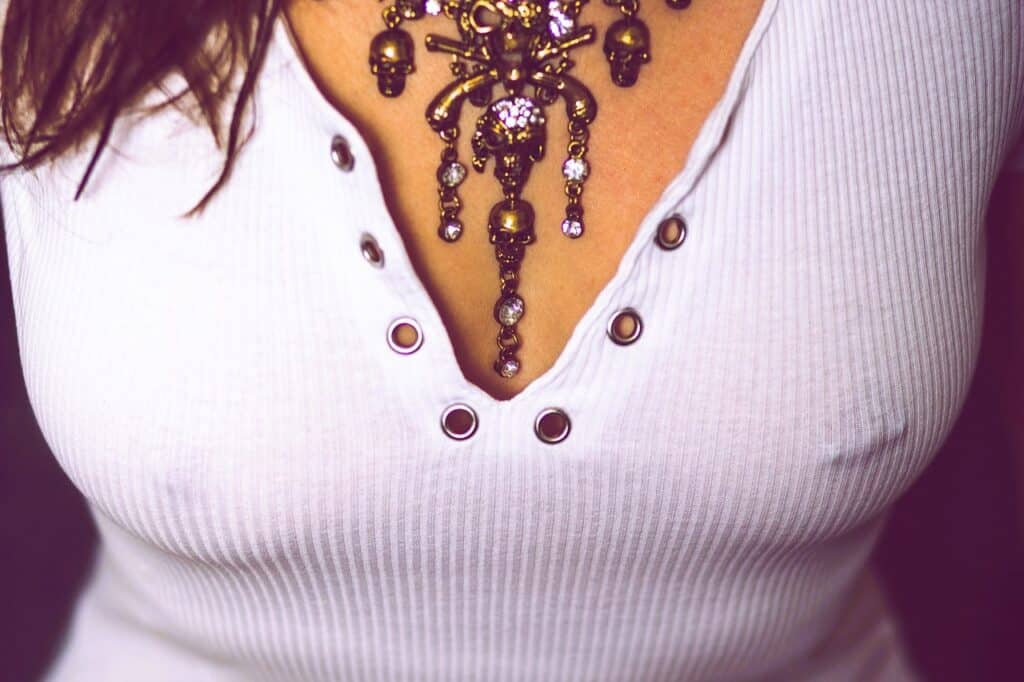
One of the most common risks of getting a piercing while breastfeeding is infection. Infection can occur if the piercing is not done in a sterile environment or if proper aftercare is not followed. Infections can be serious and may require medical attention.
Another potential complication is mastitis, which is an infection of the breast tissue. Mastitis can be caused by bacteria entering the breast through the piercing site. This can cause pain, swelling, and fever. If left untreated, mastitis can lead to an abscess, which is a collection of pus in the breast tissue.
Scar tissue can also form around the piercing site, which can cause scarring and potentially affect milk production. Nerve damage is another possible complication that can occur if the piercing is not done correctly. This can result in numbness or pain in the breast area.
It is also important to consider the potential trauma or injury that can occur during the piercing process. This can cause damage to the breast tissue and potentially affect milk production.
Overall, it is important to carefully consider the potential risks and complications before getting a piercing while breastfeeding. It is recommended to consult with a healthcare professional before making a decision.
Impact on Milk Production and Lactation
Breastfeeding mothers who are considering getting a piercing may wonder how it will affect their milk production and lactation. While there is limited research on this topic, there are some factors to consider.
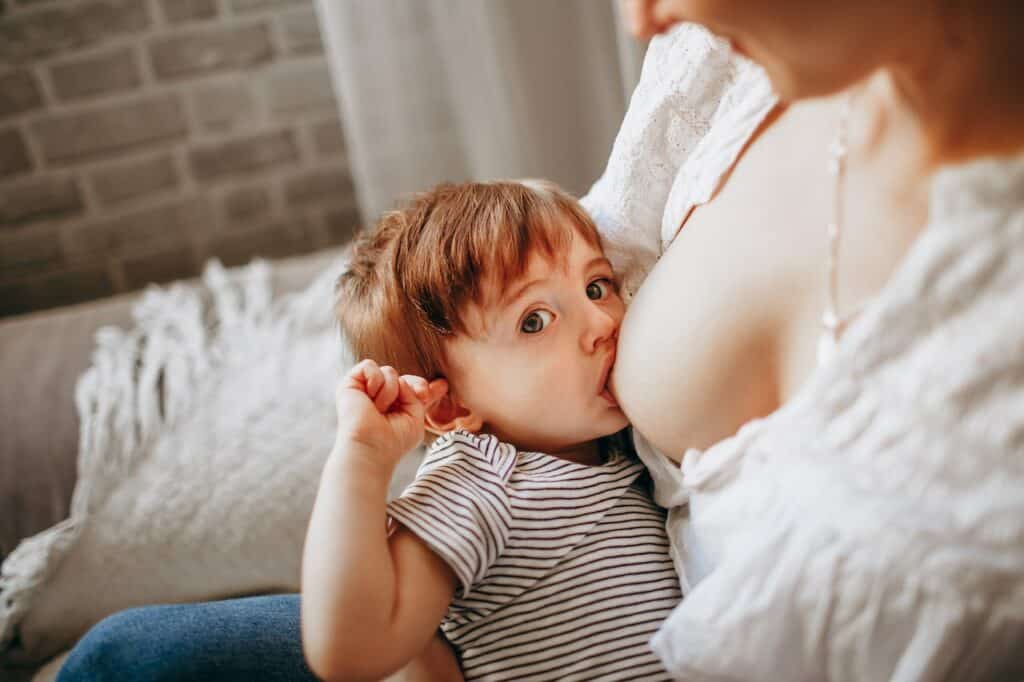
Firstly, a piercing can potentially damage milk ducts, which can impact milk flow and letdown. This can lead to a decrease in milk supply and even milk leakage. It is important for mothers to be aware of this potential risk and to monitor their milk supply closely after getting a piercing.
Additionally, the location of the piercing can also impact milk production. Piercings in the nipple or areola area can cause more damage to milk ducts and may lead to a greater impact on milk supply. Mothers should also be cautious of infections, which can further impact milk production and quality.
It is recommended that breastfeeding mothers wait until their baby is at least six months old before getting a piercing. This allows for a more established milk supply and reduces the risk of complications. Mothers should also wait until their baby is weaned before getting a piercing in the nipple or areola area.
In summary, while there is limited research on the impact of piercings on milk production and lactation, there are potential risks to consider. Mothers should be cautious and monitor their milk supply closely after getting a piercing, especially if it is in the nipple or areola area. It is recommended to wait until the baby is at least six months old and to wait until weaning before getting a piercing in the nipple or areola area.
Safety Measures and Precautions
Getting a piercing while breastfeeding requires some safety measures and precautions to ensure the health of both the mother and the baby. It is important to consult with a healthcare provider and a professional piercer before getting a piercing.
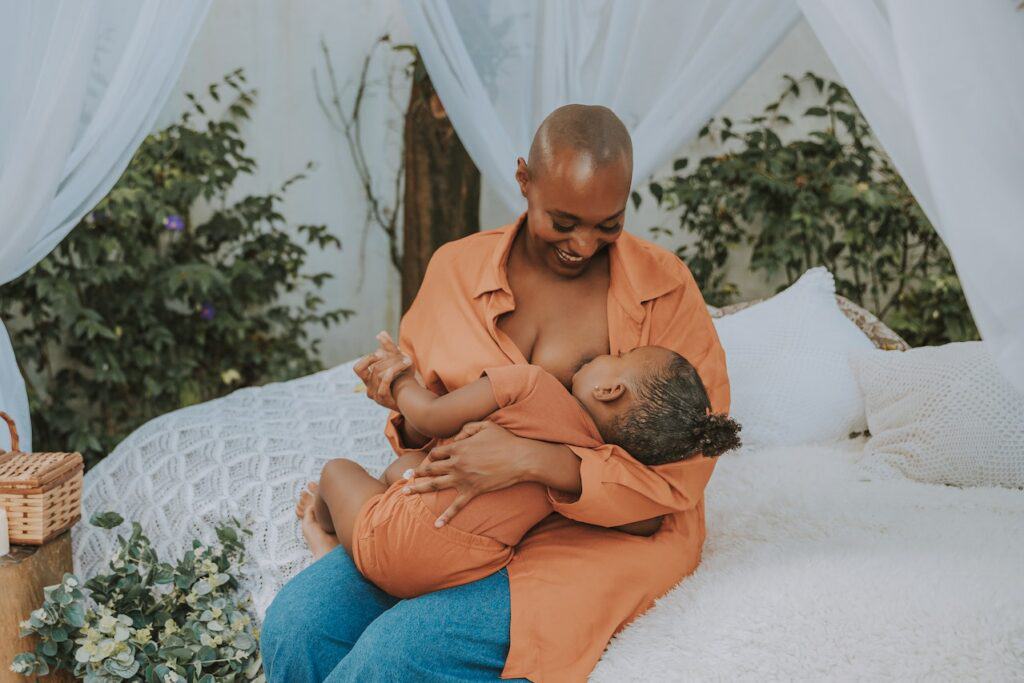
The Association of Professional Piercers recommends that breastfeeding mothers wait until their baby is at least six months old before getting a piercing. This is because the baby’s immune system is still developing, and the risk of infection is higher during this time.
When choosing a piercer, it is important to find someone who is experienced and trained in sterilization techniques. The piercer should use an autoclave to sterilize all equipment and jewelry. The jewelry should be made of high-quality materials that are safe for the baby, such as titanium or surgical steel.
It is also important to inform the piercer that the mother is breastfeeding, as this may affect the placement of the piercing. A lactation consultant can provide guidance on how to position the baby during breastfeeding to avoid irritation or injury to the piercing.
After getting a piercing, the mother should monitor the area for signs of infection, such as redness, swelling, or discharge. If any of these symptoms occur, the mother should contact her healthcare provider immediately.
Overall, getting a piercing while breastfeeding can be done safely with proper precautions and care. By working with a healthcare provider and a professional piercer, mothers can enjoy their new piercing while still providing the best possible care for their baby.
Piercing Care and Healing Process
When it comes to getting a piercing while breastfeeding, it’s important to understand the care and healing process that comes with it. Proper care and attention can help prevent infections and promote faster healing.
During the healing process, it’s normal to experience some redness, swelling, tenderness, and itching around the piercing site. Discharge and pus are also common, but if you notice excessive discharge or pus, it could be a sign of infection and you should seek medical attention.
To help with the healing process, it’s important to keep the piercing clean and dry. Avoid touching the piercing with dirty hands and avoid submerging it in water, especially in pools or hot tubs. It’s also recommended to avoid wearing tight clothing or jewelry that can irritate the piercing site.
If you experience fever, flu-like symptoms, or excessive redness and tenderness around the piercing site, it could be a sign of infection and you should seek medical attention immediately.
The healing time for piercings can vary depending on the location and type of piercing. Generally, it can take anywhere from a few weeks to several months for a piercing to fully heal. During this time, it’s important to continue with proper care and attention to prevent infections and promote faster healing.
Choosing the Right Piercing Jewelry
When it comes to choosing the right piercing jewelry while breastfeeding, there are a few things to keep in mind. The jewelry you choose can affect both your comfort and the health of your baby. Here are some factors to consider:
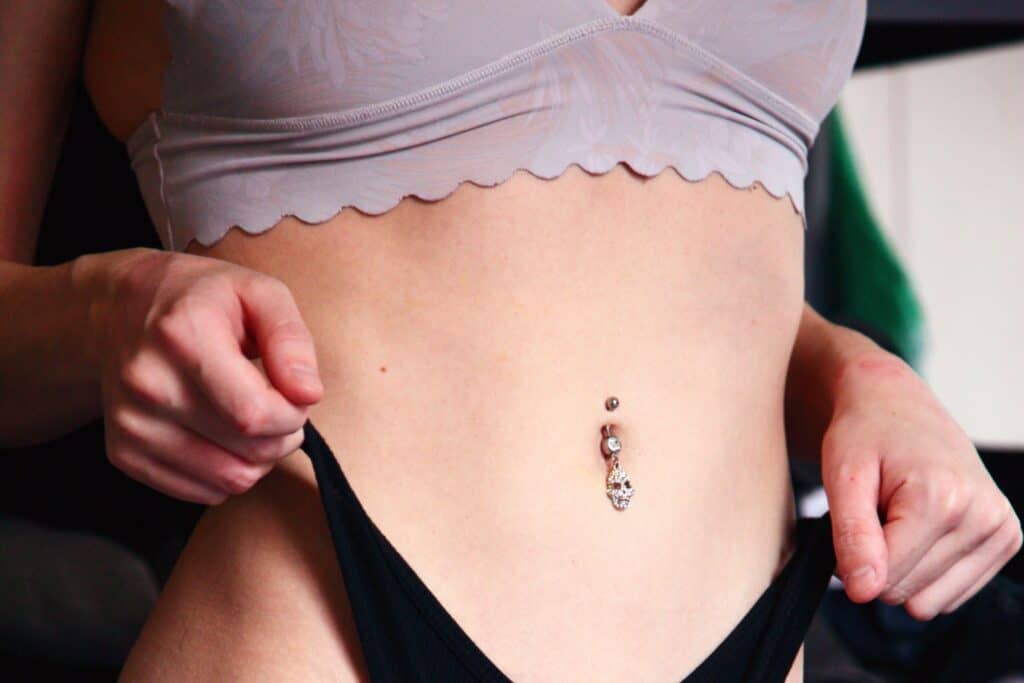
1. Material
The material of your piercing jewelry is important, as it can affect your baby’s health. Nickel, for example, is a common allergen and can cause rashes or other skin irritations. It’s best to avoid nickel jewelry altogether.
Gold is a good option for those with sensitive skin, as it is hypoallergenic. However, it is important to choose 14k or 18k gold, as lower karat gold may contain nickel or other irritants.
Stainless steel and titanium are also good options for piercing jewelry, as they are hypoallergenic and durable. However, it’s important to make sure that the jewelry is implant-grade, as lower-quality steel or titanium may contain irritants.
2. Size and Shape
The size and shape of your piercing jewelry can also affect your comfort while breastfeeding. Nipple jewelry that is too large or heavy can put pressure on your milk ducts, causing discomfort or even blocking milk flow.
It’s best to choose jewelry that is lightweight and fits comfortably. Circular barbells or captive bead rings are good options, as they are relatively small and won’t put too much pressure on your nipples.
3. Cleaning and Maintenance
Finally, it’s important to choose piercing jewelry that is easy to clean and maintain. You’ll want to clean your jewelry regularly to prevent infection or other complications.
Choose jewelry that can be easily removed and cleaned, such as captive bead rings or circular barbells. Avoid jewelry that is difficult to clean, such as hoops or studs with butterfly backs.
By keeping these factors in mind, you can choose piercing jewelry that is safe, comfortable, and easy to maintain while breastfeeding.
Piercing During Pregnancy and Post-Pregnancy
Pregnancy is a time of significant changes in the body, and many women wonder if it is safe to get a piercing while pregnant. While there is no definitive answer, most healthcare providers recommend waiting until after pregnancy to get a piercing.
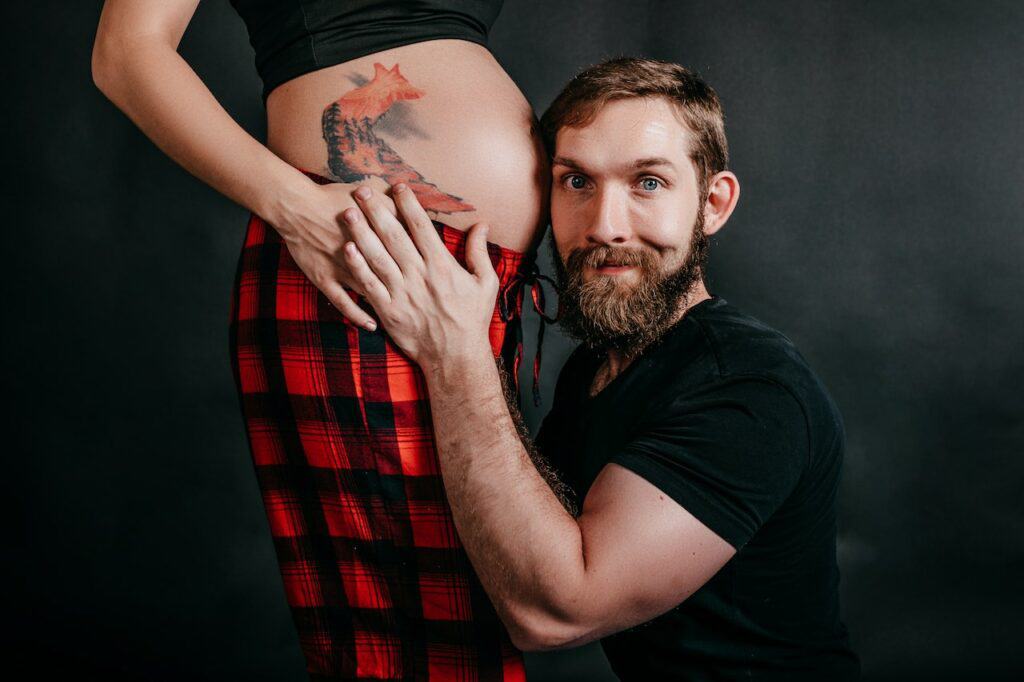
During pregnancy, the body undergoes various changes, including hormonal changes, weight gain, and changes in the immune system. These changes can increase the risk of complications during the piercing process, such as infection, bleeding, and scarring. Additionally, some piercings may interfere with breastfeeding, which can be a concern for many new mothers.
After pregnancy, the body needs time to heal and recover, and it is essential to wait until the body has fully healed before getting a piercing. The healing process can take several weeks to several months, depending on the location of the piercing and the individual’s healing process. Additionally, new mothers should be cautious about piercing locations that may interfere with breastfeeding, such as nipple or chest piercings.
In general, it is best to wait until after pregnancy and breastfeeding to get a piercing. However, if a woman decides to get a piercing during pregnancy or post-pregnancy, it is essential to consult with a healthcare provider and a professional piercer to ensure that all necessary precautions are taken to minimize the risk of complications.
Effects on the Infant
When considering getting a piercing while breastfeeding, it’s important to consider the potential effects it could have on the infant. While there is limited research on the topic, there are some potential risks to be aware of.
One concern is that the piercing could interfere with the infant’s latch during breastfeeding. If the piercing is located near the nipple, it could cause discomfort or pain for the infant and make it difficult for them to properly latch. This could lead to feeding problems and potentially impact the infant’s growth and development.
Another concern is the risk of the infant choking on the jewelry or parts of the piercing that may come loose. If the jewelry is not securely fastened, it could become a choking hazard if it comes loose and the infant puts it in their mouth.
There is also a risk of infection if the piercing is not properly cared for and becomes irritated. This could potentially impact the infant’s immune system and lead to illness or other health issues.
In some cases, the infant may develop a rash or become irritated if they come into contact with the jewelry or if the piercing is not properly cleaned.
Finally, there is a risk of aspiration if the infant accidentally inhales small parts of the piercing. This could potentially lead to respiratory problems and require medical attention.
Overall, while there is limited research on the topic, it’s important to carefully consider the potential risks before getting a piercing while breastfeeding. It’s recommended to speak with a healthcare provider and a professional piercer to discuss any concerns and ensure proper care and safety measures are taken.
When to Consult a Doctor
While getting a piercing while breastfeeding is generally safe, there are certain situations where it is important to consult a doctor before going ahead with the procedure.
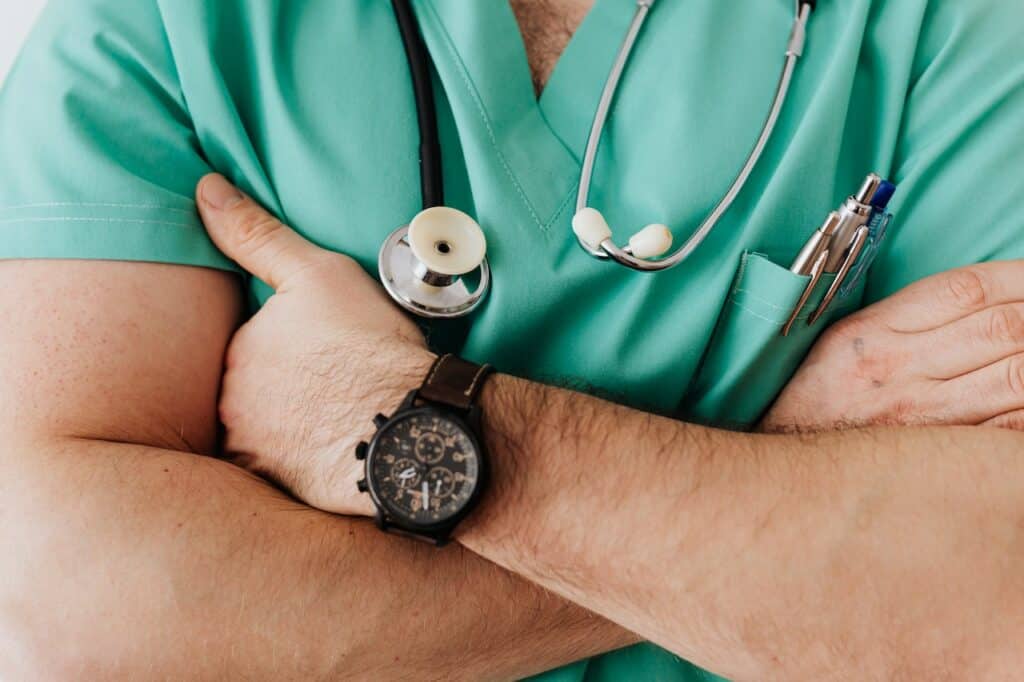
If the piercing is in an area that is close to the breast, such as the nipple or areola, it may cause discomfort while breastfeeding. In some cases, it may even interfere with the baby’s ability to latch on properly. A doctor can advise on the best course of action in such situations.
It is also important to consult a doctor if the mother has any health conditions, such as diabetes or an autoimmune disorder, that could increase the risk of infection or other complications. Additionally, if the mother is taking any medications, such as antibiotics, it is important to discuss the potential impact on breastfeeding and the safety of getting a piercing.
If the piercing is done in an unhygienic environment or with unsterilized equipment, it can increase the risk of infection. This can be particularly concerning for mothers who are already at a higher risk of infection due to breastfeeding. A doctor can advise on the best practices for getting a safe piercing.
Finally, if the mother has a history of hepatitis B or other blood-borne infections, it is important to discuss the risks and potential complications of getting a piercing. While it may still be safe to get a piercing, it is important to take extra precautions to avoid infection.
In summary, while getting a piercing while breastfeeding is generally safe, it is important to consult a doctor in certain situations to ensure the safety of both the mother and the baby.
Alternative Piercing Locations
For new mothers who are breastfeeding, getting a piercing might not be the best option due to possible complications. However, there are alternative piercing locations that can be considered if one still wishes to get a piercing.
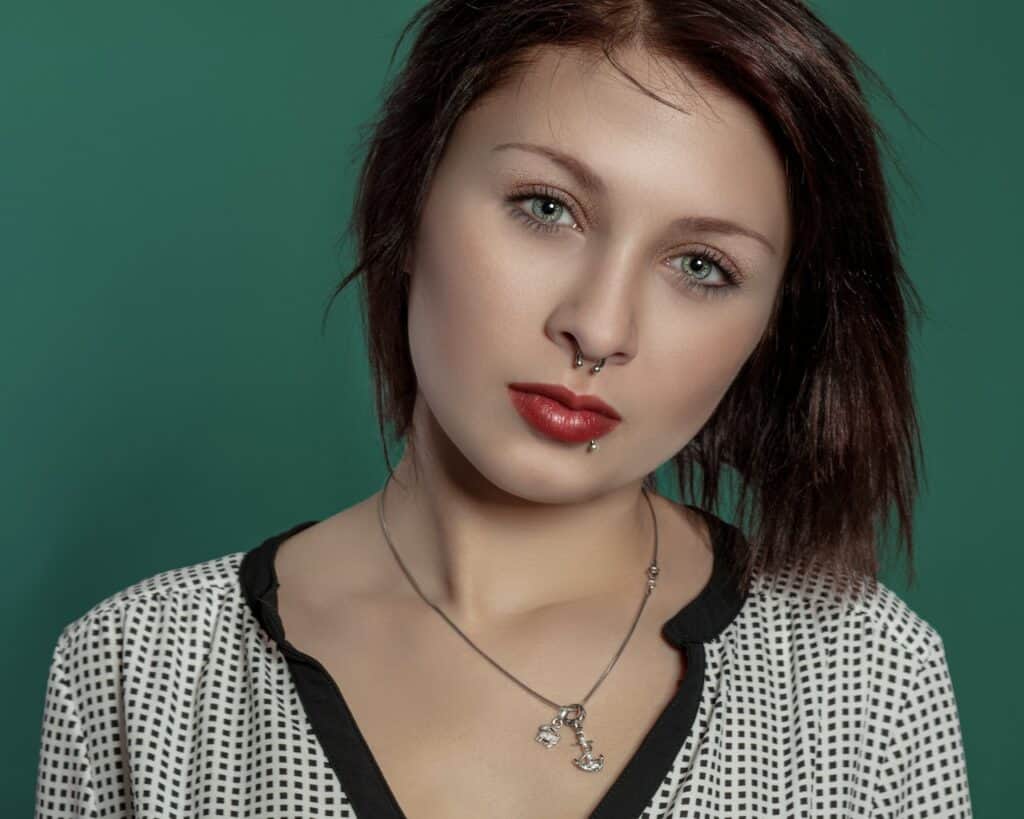
1. Ear Piercing
Ear piercing is a popular alternative piercing location for nursing mothers. The earlobe is a safe and easy area to pierce, and it does not interfere with breastfeeding. It is important to note that cartilage piercings, such as those in the upper ear, can take longer to heal and may be more prone to infection.
2. Nose Piercing
Nose piercing is another alternative location for nursing mothers. The nostril is a common area to pierce, and it does not interfere with breastfeeding. However, it is important to wait until after the first few months of breastfeeding before getting a nose piercing to ensure that the baby has established a good latch and is not affected by any discomfort or pain.
3. Belly Button Piercing
Belly button piercing is not recommended for nursing mothers as it can interfere with breastfeeding. The piercing can cause irritation and discomfort for both the mother and baby, and there is a risk of infection. It is best to wait until after the breastfeeding period before getting a belly button piercing.
In summary, ear and nose piercings are safe and viable alternative locations for nursing mothers who wish to get a piercing. However, it is important to wait until after the first few months of breastfeeding before getting a piercing to ensure that the baby is not affected by any discomfort or pain. Belly button piercing is not recommended during the breastfeeding period.
Related post: Icy Hot While Breastfeeding
Frequently Asked Questions
Is it safe to get a piercing while breastfeeding?
Yes, it is generally safe to get a piercing while breastfeeding. However, it is important to take certain precautions to minimize any potential risks.
Can getting a piercing while breastfeeding cause any harm to the baby?
There is a small risk that getting a piercing while breastfeeding can cause harm to the baby. This is because the piercing can introduce bacteria or other harmful substances into the breast milk, which can then be ingested by the baby. However, if proper hygiene and aftercare procedures are followed, this risk can be minimized.
What are the risks of getting a piercing while breastfeeding?
The main risks of getting a piercing while breastfeeding are infection and inflammation. These risks can be minimized by choosing a reputable piercer and following proper hygiene and aftercare procedures.
Are there any precautions to take before getting a piercing while breastfeeding?
Before getting a piercing while breastfeeding, it is important to consult with a healthcare provider to ensure that it is safe to do so. It is also recommended to choose a reputable piercer and to follow proper hygiene and aftercare procedures.
Can breastfeeding affect the healing process of a piercing?
Breastfeeding can affect the healing process of a piercing, as the baby’s sucking can cause irritation and inflammation. However, this can be minimized by choosing a piercing location that is less likely to be affected by breastfeeding, such as the earlobes.
Is it advisable to wait until after breastfeeding to get a piercing?
It is generally advisable to wait until after breastfeeding to get a piercing, as this can minimize any potential risks to the baby and ensure proper healing of the piercing. However, if proper precautions are taken, it is generally safe to get a piercing while breastfeeding.

Iesha is a loving mother of 2 beautiful children. She’s an active parent who enjoys indoor and outdoor adventures with her family. Her mission is to share practical and realistic parenting advice to help the parenting community becoming stronger.
